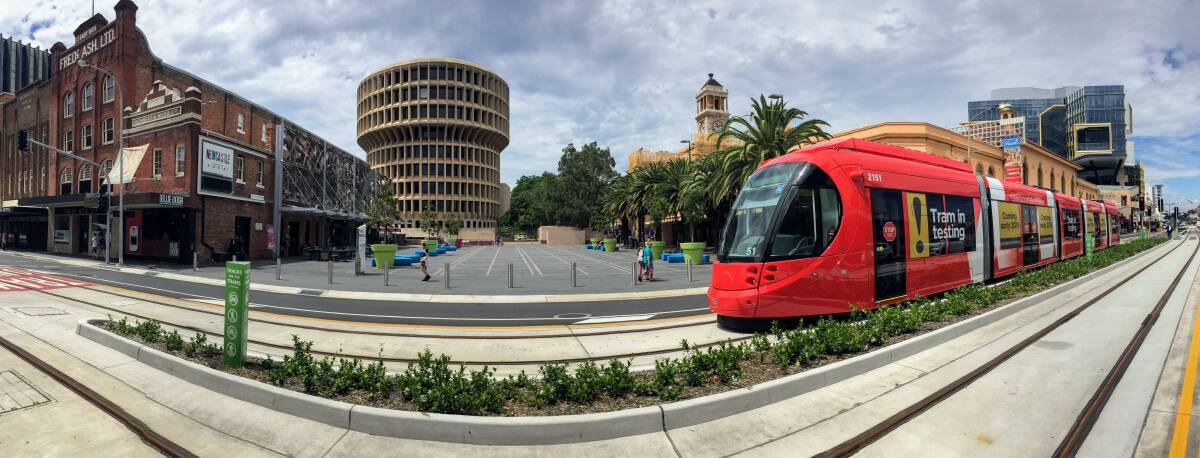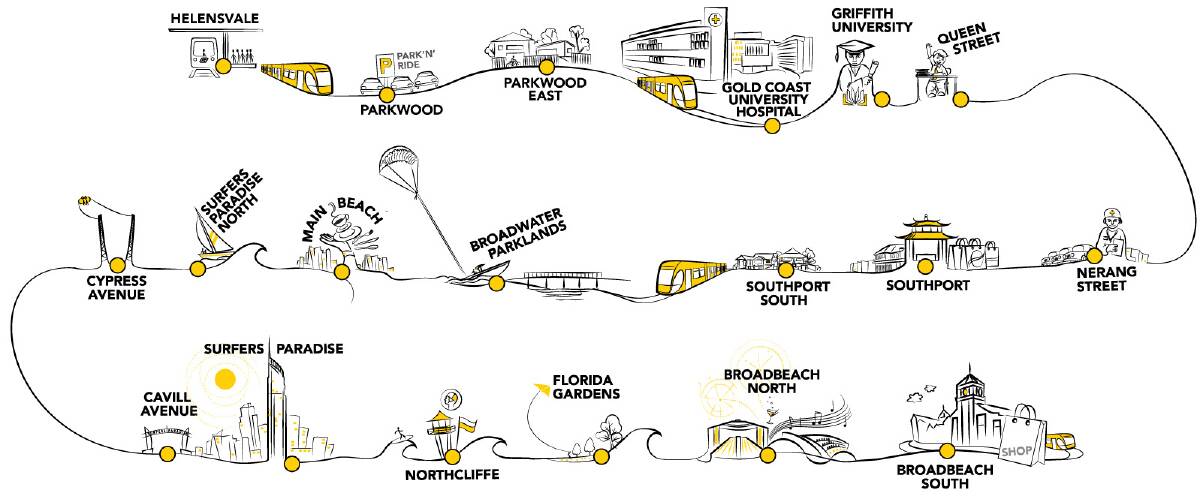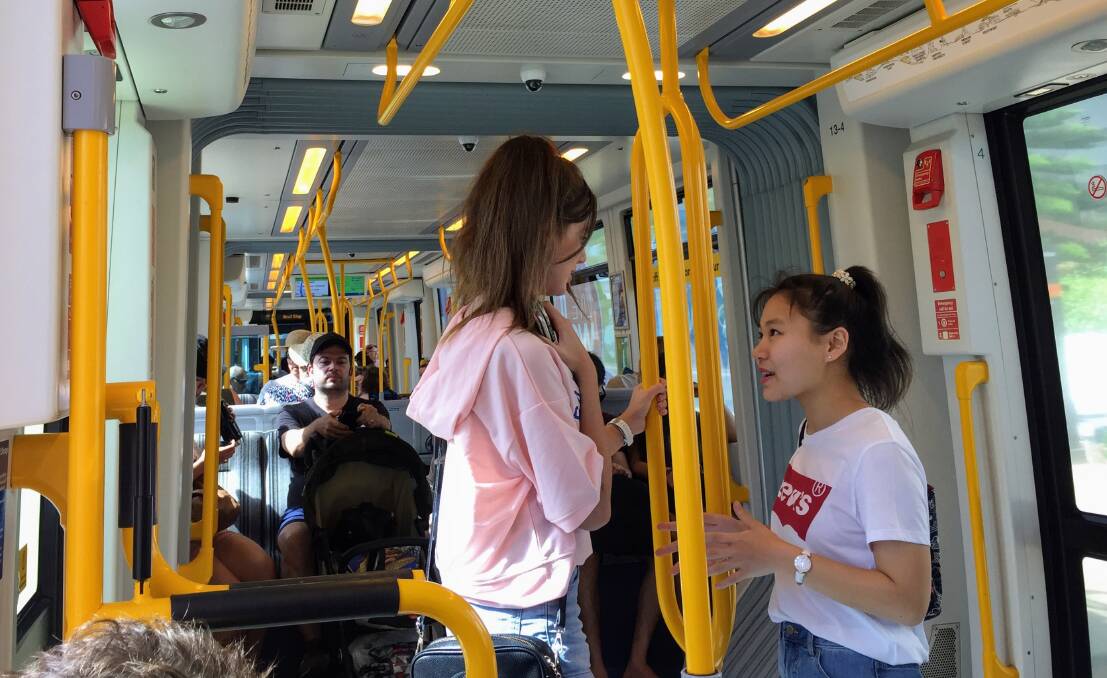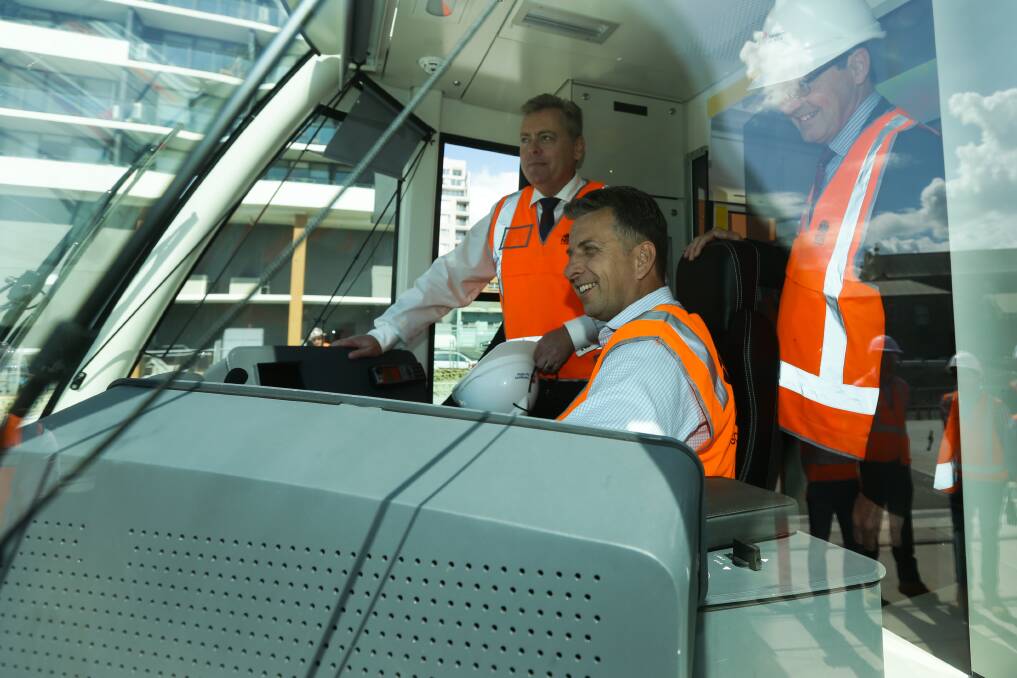
Transport Minister Andrew Constance can only hope Newcastle’s light rail service proves as popular as the Gold Coast’s.
Subscribe now for unlimited access.
$0/
(min cost $0)
or signup to continue reading
The Newcastle tram is not due to start taking passengers until next month, but a NSW Auditor-General’s report has already strongly rebuked the NSW government over the absence of planning before it announced the light rail project in 2013.
The 2.7-kilometre, six-stop line from Wickham to Newcastle East has been derided as a “toy train” by opponents, and the Auditor-General left no doubt its $368 million cost was unjustified.
But many Novocastrians, buoyed by the sight of the sleek red tram sliding along the city’s streets, view it is a symbol of a city on the move after years of stagnation.
Eight hundred kilometres up the coast, the Gold Coast’s G:link offers a case study in how light rail can work in a mid-sized city, albeit one approaching double the population of Newcastle.

“The G”, as it known by locals, runs for 20km from Pacific Fair shopping centre, which is twice the size of Westfield Kotara, to Helensvale, where it connects with the heavy rail line north to Brisbane.
It is powered by overhead wires and has 19 stations. For Opal card users, it costs adults $3.20 a trip, or $2.56 off-peak, to travel the 44 minutes from one end to the other.
The Gold Coast’s narrow geography, bumper tourist numbers and 1.7 per cent annual population growth rate have contributed to the tram’s popularity.
Queensland government annual reports show it carried 6 million people in its first year, rising steadily to 8 million in 2016-17.
Patronage jumped to 9 million in 2017-18 after a 7.3km second stage of the line, from University Hospital to Helensvale, opened in December 2017, in time for the Commonwealth Games.
The Queensland government and GoldLinQ, the consortium that runs the tram, say it has consistently attracted patronage above expectations, and the federal government has committed $112 million to help pay for extending it 6.4km south to Burleigh Heads.

The ultimate vision for the network includes a 14km extension beyond Burleigh to Gold Coast Airport and Coolangatta and a western spur to Robina shopping centre.
The estimated construction cost of the existing line is well beyond $2 billion, and the extensions will add another $3 billion to the project.
The G:link may have been embraced by passengers and politicians alike, but 2016 Census data suggests it has not necessarily succeeded in getting Gold Coast workers out of their cars.
The proportion of commuters driving to work rose from 72.6 per cent in 2011 to 73.7 per cent in 2016, two years after the tram started.
The ratio of bus commuters fell from 2.0 per cent to 1.6 per cent in the same period, though the government has claimed a 25 per cent rise in overall public transport use since the line opened.
Build it, and will they come?
Back in Newcastle, it is more than 25 years since the government launched Honeysuckle Development Corporation with visions of a more modern, investor-friendly city.
For much of that time, the rebirth of Newcastle has been a slow burn.
But, with the light rail route open again to car traffic and the Spanish-made CAF trams now moving along the city’s freshly landscaped main drag, the new Newcastle is beginning to take shape.
Undoubtedly, Liberal-National ministers will be lining up for photo ops next month to convince Sydneysiders their nightmare light-rail project will eventually deliver something useful.
The government thinks its $650 million Revitalising Newcastle program, of which the tram is the centrepiece, has already started fulfilling its purpose by sparking a construction boom in the CBD, including seven hotels on the drawing board.
A Newcastle City Council spokesperson said on Friday that the council had approved about $1.06 billion in development applications in 2018, up from $746 million in 2017, $924 million in 2016 and $426 million in 2015.

Spiralling property prices have no doubt played their part in that investment, but the government is claiming an early win for light rail.
One significant difference between the Newcastle and Gold Coast tram projects is that the G:link was built to service existing attractions, including a casino, convention centre, hospital, large shopping centres and Griffith University.
It also passes the plethora of high-rise apartment towers in Surfers Paradise, Broadbeach and Southport, along with kilometres of beaches.
The Newcastle tram, on the other hand, has been built in the hope of stimulating investment, especially by opening up the harbour to the rest of the CBD.
It will take passengers past Newcastle University’s growing inner-city campus on its way to the beach, but Hunter transport planner Ron Brown believes the CBD has a long way to go before offering the “gravitational pull” of Sydney and the Gold Coast.
You’ve got to have a purpose at each end of the trip for people to be making the choice to use that service.
- Transport engineer Ron Brown
He argues Charlestown and Kotara shopping centres are doing a far better job of attracting people.
“The funnelling of movement isn’t to and from the city. The commercial opportunities in the city have not yet reached the point where they’re going to be providing the attraction,” Mr Brown said.
“Obviously, that is something they are hoping to generate, so which comes first? You’ve got to have a purpose at each end of the trip for people to be making the choice to use that service.
“Several of the business people I’ve spoken to in town don’t expect there to be any real outcome or benefit until we get the high-rise residential developments in place, which will create a new platform for the city to function.”
The government has promised a business case this year on extending the tram into the suburbs, possibly to John Hunter Hospital via Broadmeadow.
But the exponential cost involved may keep any expansions on the backburner for some time, especially as there is a feeling within the conservative government that it has not received due credit for its work so far.
Newcastle’s tram will be a novelty when it opens.
Whether it continues to attract passengers will determine if a state government of any hue is prepared to double down and extend it to anything approaching the new 12km services under construction in Sydney and Canberra, let alone Gold Coast’s 20km line.


